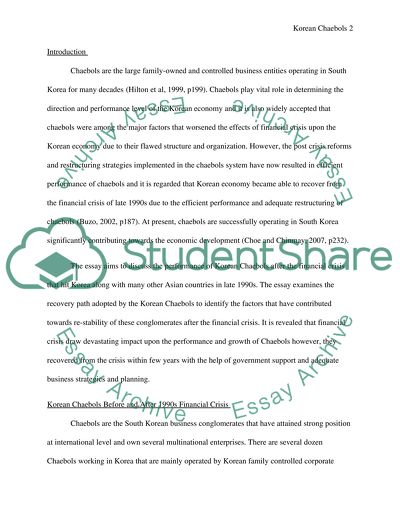Cite this document
(How do you account for the success of Koreas chaebol What Case Study, n.d.)
How do you account for the success of Koreas chaebol What Case Study. Retrieved from https://studentshare.org/finance-accounting/1564268-how-do-you-account-for-the-success-of-korea8217s-chaebol-what-problems-did-the-chaebol-face-in-the-asian-financial-crisis-of-the-late-1990s
How do you account for the success of Koreas chaebol What Case Study. Retrieved from https://studentshare.org/finance-accounting/1564268-how-do-you-account-for-the-success-of-korea8217s-chaebol-what-problems-did-the-chaebol-face-in-the-asian-financial-crisis-of-the-late-1990s
(How Do You Account for the Success of Koreas Chaebol What Case Study)
How Do You Account for the Success of Koreas Chaebol What Case Study. https://studentshare.org/finance-accounting/1564268-how-do-you-account-for-the-success-of-korea8217s-chaebol-what-problems-did-the-chaebol-face-in-the-asian-financial-crisis-of-the-late-1990s.
How Do You Account for the Success of Koreas Chaebol What Case Study. https://studentshare.org/finance-accounting/1564268-how-do-you-account-for-the-success-of-korea8217s-chaebol-what-problems-did-the-chaebol-face-in-the-asian-financial-crisis-of-the-late-1990s.
“How Do You Account for the Success of Koreas Chaebol What Case Study”. https://studentshare.org/finance-accounting/1564268-how-do-you-account-for-the-success-of-korea8217s-chaebol-what-problems-did-the-chaebol-face-in-the-asian-financial-crisis-of-the-late-1990s.


